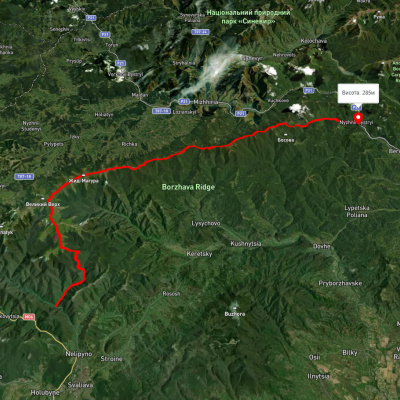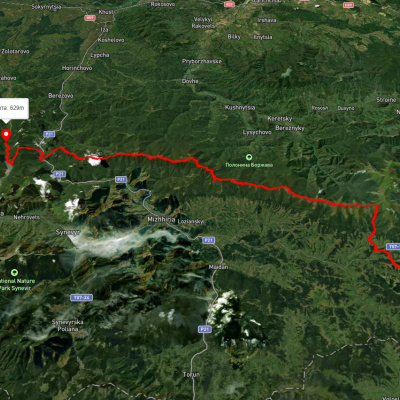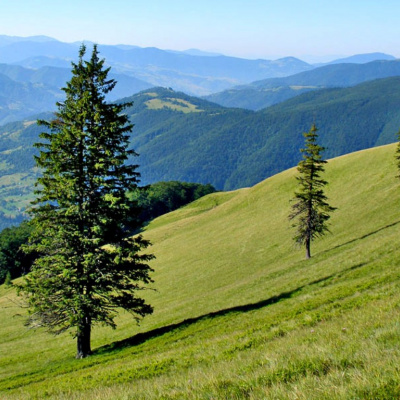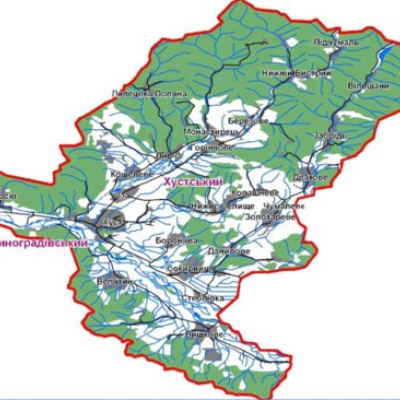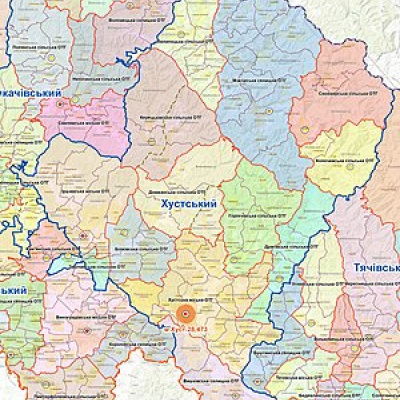Khust district
Khust district is a region located in western Ukraine, near the border with Slovakia and Hungary. It is part of the Transcarpathian region, which is known for its picturesque landscapes, diverse culture and unique history. Khust district covers an area of about 3180.3 square kilometers and has a population of about 269,100 people. The district is home to several ethnic groups, including Ukrainians, Hungarians, Roma, and Slovaks.The district is known for its natural beauty, with the Carpathian Mountains stretching across its western part. It is also home to several rivers and streams, including the Latorytsia and Rika. Khust district has a rich cultural heritage, many historical monuments and traditions that are passed down from generation to generation. The region is known for its traditional crafts, such as wood carving and embroidery, as well as its distinctive folk music and dances. Tourism is an important industry in Khust district, with visitors attracted by its natural beauty, cultural heritage and outdoor activities such as hiking, skiing and rafting. Khust district is located in the Carpathian Mountains, which run through the western part of Ukraine. The region's topography is characterized by mountainous terrain, the peaks of which reach a height of over 1000 meters. The highest peak of Khust district is Mount Strymba (1719 m) above sea level. Khust district is known for its natural beauty, there are many opportunities for outdoor recreation, such as hiking, skiing, rafting. The mountainous terrain of the region provides a unique habitat for a variety of plant and animal species, including bears, wolves and lynxes. Despite the rugged terrain, Khust district has a long history of human settlement and has been home to various ethnic groups for centuries. The region's topography has shaped its cultural and economic development, with traditional crafts such as wood carving and pottery well suited to the local environment. Today, the region's topography continues to play an important role in its identity and way of life.
Khust district is known for its rich cultural heritage, historical monuments and traditions. Here are some of them:
- Khust Castle: Khust castle is a medieval fortress of the XIV century. It was built by Hungarian kings and took over a hundred years to complete. Today it is a popular tourist attraction and a symbol of the area.
- Church of St. Elizabeth: This Gothic-style church is located in the center of Khust. It is known for its beautiful stained glass windows and frescoes.
- Traditional crafts: Khust district is known for its traditional crafts, including wood carving, pottery, and embroidery. These crafts have been passed down from generation to generation and are an important part of the region's cultural heritage. Folk music and dancing: Khust district has a rich tradition of folk music and dance, with many local festivals and events dedicated to these traditions. The "Hutsulka Ksenia" festival, for example, is a popular event that includes traditional music, dancing and costumes.
- Khust Museum of Local Lore: The Khust Ethnographic Museum is dedicated to preserving the cultural heritage of the region. It houses a collection of traditional costumes, household items, and other artifacts that provide a glimpse into the area's past.
Hydrology:
- Major rivers: Tysa, Rika, Tereblya, Ozerianka, Sukhar, Khustets, Rypynka, Holiatynka, Bystrak, Borzhava, Kushnytsia, Irshavka, Ilnychka, Sinyavka, Bailova, and others.
- Lakes: Synevyr
- Reservoirs: Vilshany Reservoir
- Waterfalls: Shipot, Rudavets
The climate of Khust district is continental, with cold winters and mild summers. The average temperature in January is -4°C and in July 17°C. The district receives a significant amount of precipitation. The Khust district has a diverse flora and fauna due to its different terrain, climate and vegetation. Here are some of the plant and animal species that can be found in the region:
Flora:
- Beech forests: Khust district is home to some of the largest beech forests in Europe. These forests are located at lower elevations and are characterized by tall, thin trees and lush undergrowth.
- Coniferous forests: as the altitude increases, beech forests are replaced by spruce and fir forests, which can be found at higher altitudes.
- Alpine meadows: Above the tree line are alpine meadows and pastures that are home to many wildflowers such as edelweiss, gentian, and mountain avena.
Fauna:
- Brown bears: The Carpathians are one of the few habitats of the European brown bear, and Khust district is no exception. These large mammals can be found in the forests and mountains of the region.
- Lynx: Another large predator that can be found in the Khust region is the Eurasian lynx, which is known for its characteristic pointed ears and spotted fur.
- Wolves: Wolves are also found in the Khust region, but they are more elusive than bears and lynxes.
- Red deer: The Carpathians are home to a large population of red deer, which can often be seen grazing in meadows and forests.
- Birds: Khust district is home to many species of birds, including eagles, hawks, owls, woodpeckers, and various songbirds.
In general, the flora and fauna of Khust region is an important part of its natural heritage and attracts many visitors every year. Efforts are being made to protect and preserve the region's biodiversity and natural resources for future generations. Khust district offers several options for family vacations. Here are some places you can visit with your family in the area:
- Synevyr National Park: This national park is located in the heart of the Carpathian Mountains and offers many opportunities for hiking, picnicking, and wildlife watching. The main attraction of the park is Lake Synevyr, which is the largest natural lake in the Carpathians.
- Pylypets Ski Resort: This ski resort is located near the village of Pylypets and offers a wide range of winter activities, including skiing, snowboarding, and sledding. The resort also has a tubing park and a snow park for children.
- Kosyno Thermal Springs: These natural hot springs are located near the village of Kosyno and offer relaxation and treatment for the whole family. The springs are known for their healing properties, said to relieve stress, improve blood circulation and promote relaxation.
- Khust Castle: This medieval castle is located in the city of Khust and offers a glimpse into the rich history of the region. The castle has a museum that displays artifacts and exhibits related to the history of the castle and the culture of the region.
These are just a few examples of the many places you can visit with your family in Khust district. The region's natural beauty, cultural heritage and outdoor activities make it an ideal destination for families looking for a fun and memorable vacation.

Які туристичні (пішохідні) маршрути проходять через/біля Khust district?
Пропонуємо пройти такі туристичні (пішохідні) маршрути через/біля Khust district: с. Вовчий, через г. Стій, г. Жид-Магура, пер. Присліп, Полонину Кук, г. Коритище, с. Широке до с. Нижній Бистрий, с. Скотарське, через пол. Боржава, пол. Палений Грунь до с. Нижній Бистрий, с. Скотарське, через пол. Боржава, пол. Палений Грунь до вдсх. Вільшанське, смт. Буштино, через ур. Занівка до г. Манчул, Карпатський туристичний шлях, с. Кушниця, через Полонину Кук, г. Широкий Верх, г. Жид-Магура, г. Великий Верх, г. Плай до смт. Воловець
